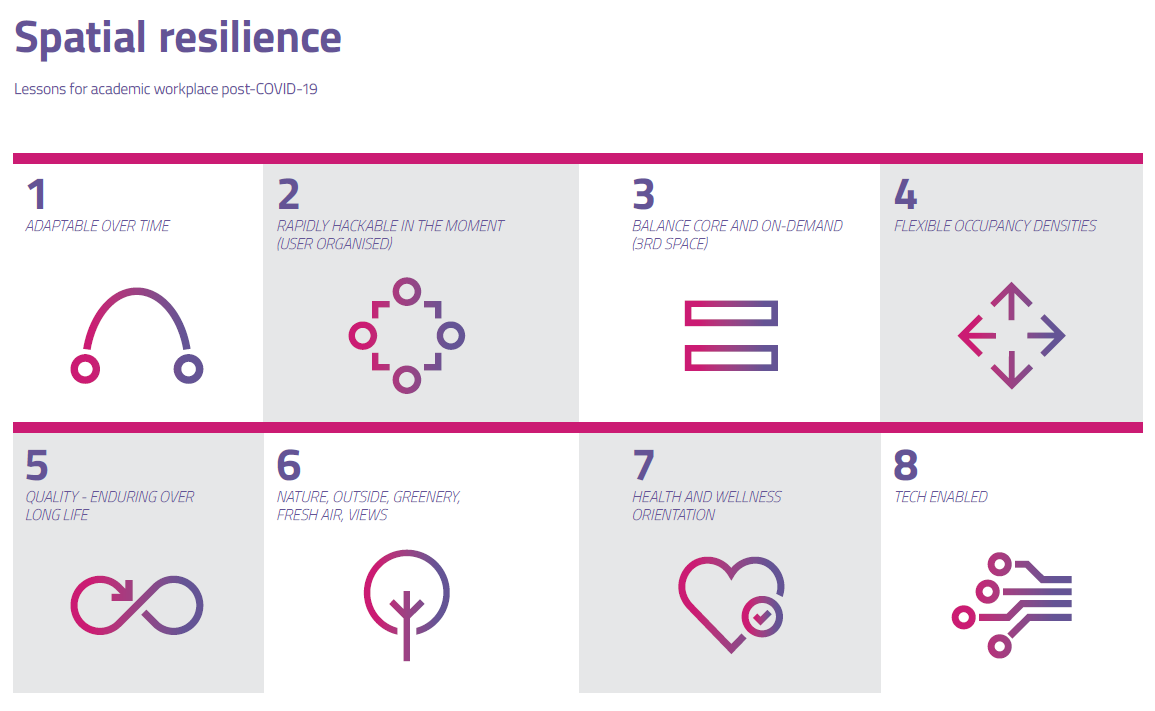Which real estate management software is best for your campus?

Greg Jarboe

According to an article by Maria Carrasco entitled, “In-Person Welcome Weeks Return,” which was published by Inside Higher Ed on Aug. 18, 2021, colleges and universities are preparing to welcome a new class of incoming freshmen and returning sophomores, juniors, and seniors. “But even as they prepare for students to come to campuses, institutions across the country are also revising or restoring their vaccination and masking requirements and ramping up vaccination drives as infection rates of the much more easily transmissible Delta variant of the coronavirus continue to climb,” she wrote.
A second article by James Higgins entitled, “Fifth of universities expect post-pandemic teaching to be half online, survey suggests,” which was published by University Business, reported that a new survey of university estates and professional services managers found a fifth of universities expect teaching after the pandemic to be a fifty-fifty split between online and in-person instruction. The survey results were published by the Association for University Directors of Estates (AUDE) in a new report on the changes already underway in the higher education sector.
A third article by Laura Krantz entitled, “Return of students to college campuses in Boston area brings uncertainty because of Delta variant,” which was published by The Boston Globe on Aug. 29, 2021, added, “Most institutions will have full dorms, side-by-side desks, and in-person activities, but they’ll also require masks, regular testing, and proof of vaccination for students and staff. And a sense of foreboding looms: The Delta variant is extremely contagious, and no one knows what the colder months will bring.”
All this means that facility and real estate managers in Higher Education Institutions (HEIs) need to navigate the uncertainty with strategic insights, tools, and other resources that they didn’t need two years ago. It also means that it’s time to redefine the required real estate management software features they’ll need in the Real Estate & Lease Management Solutions they adopt in the foreseeable future.
Real estate management software features for the post-pandemic era
Another related factor that’s redefining the requirements for the software and solutions you’ll need going forward is the way the collective experience of working off-campus during the Covid-19 pandemic has changed attitudes, perceptions and habits in higher education across the world.
According to a new AUDE report entitled, “Blended Working in the Higher Education Sector: A review of the post-pandemic university workplace,” one of the features that needs to be added to the list of requirements for real estate management software is “spatial resilience.”
According to Cheryl Pick. Project and Engagement Manager at AUDE, “The concept of ‘spatial resilience’ emerges from the report; the idea that not only do our campuses need to be more flexible than they have ever been before, in the ways that our built spaces can be configured and used; not only do they need to be adaptable over time as changing technologies affect teaching and learning behaviours; not only do they need to be ‘hackable’ in the moment so that users can adapt the space as they see fit at the time; not only do they need to be built with health and wellbeing in mind, aware of light and fresh air, green spaces and views; but they also need to be of high quality that endures over the long term.”
She added, “We don’t know all the answers and the survey responses help to validate that uncertainty is the current shared position, and that this is OK as the entire sector gently ‘feels it’s way’. 59% of survey respondents envisage that agile working will be implemented by the end of the year. But there remains significant uncertainty about the ratio of F2F teaching to remote teaching; 59% are not yet confident about the room booking systems that are an essential element of flexibility; and 74% do not yet have the tools in place to monitor space utilisation effectively.”
Best real estate management software in 2021 and beyond
So, what is the best real estate management software in 2021 and beyond? Well, your facilities are complex — so any process or software that helps you run your campus should reduce stress, not add to it.
Fortunately, AssetWorks’ AiM Real Estate and Property Management software delivers a comprehensive business tool that enables facilities professionals and real estate managers to oversee every aspect of their portfolio, including real estate database management, lease management and tracking, property management, accounting, and budgeting.
This will enable you to manage your portfolio of:
- People: Your workforce and customers.
- Places: Your land and property inventory.
- Things: Your Asset Inventory.
But, AssetWorks’ Real Estate and Lease Management Solution also includes:
- AiM IQ, a business intelligence solution that empowers the real estate and facility professional with data insights they can translate into actionable information. The solution helps identify operational trends, process constraints, and provide benchmarking which have impact at many levels of a facilities organization.
- AiM Key & Access Control, which helps shop personnel track access locations, cores, locks, and keys (to include key copies and rings) and helps reduce the fear of rogue keys by taking control of the release/return process. Administrators and Security officials concerned with the over authorization of access also benefit from AiM’s Key and Access Control software. Knowing exactly what space is opened before keys are released is essential for effective control. Integration with AssetWorks’ Space Management system allows graphical, floor-plan style reports that can quickly allow the proper decisions to be made.
- Professional Services. AssetWorks not only develops and sells the ReADY, AiM and Go software solutions, they also provide professional services and support their higher education customers directly. With a vested interest in customer success, they partner with you in providing strategic services to meet business goals, implementation services to deploy the software and ensure adoption, custom solutions for interfacing and automation, as well as technical and support services to keep it all running smoothly.
This means that AssetWorks’ platform gives your organization a unified view of your entire campus – one that is designed for transparency, insight, and better decision making. Their family of products also gives you an unmatched level of agility and flexibility for your entire portfolio – one that provides the “spatial resilience” that you will need going forward.
Get additional strategic insights, tools, and other resources from AssetWorks
You can get additional strategic insights by reading other blog posts in AssetWorks’ Learning Center. For example, check out “What is facility management software in the post-pandemic era?”
Or, visit AssetWorks’ COVID-19 Resource Center. And request access to the past event recording entitled, “Getting Your Space Ready to Use Again (Hosted by AUDE).”
Or, download AssetWorks’ RFP Resources. They are designed to make the process of creating an RFP for real estate management software smoother.
Or, contact one of AssetWorks’ team of industry professionals, who average over 15 years of experience in higher education and facilities management.
But, whatever you do, do it before the need for “spatial resilience” overwhelms your campus.
About Greg Jarboe
Greg Jarboe is the president and co-founder of SEO-PR, which has provided services to the University of the Pacific, the University of Pennsylvania, Rutgers University, and Dickinson College. Greg has been an instructor in several Rutgers Business School Mini-MBA programs.
Greg graduated from the University of Michigan, which was founded in 1817, but spent his junior year at the University of Edinburgh, which was founded in 1582, making it one of Scotland’s ancient universities and the sixth oldest university in the English-speaking world. That’s when he had his first bite of haggis at a Burns Supper.
Subscribe to AssetWorks' Blog & Newsletter
We send out periodic updates to our facilities community.
Read On

What is the best utility management software for the new normal?
A couple of years ago, selecting the best utility management software for your college or...
Learn more arrow_forward
Is an IWMS Right for Your Organization?
An IWMS – Integrated Workplace Management System – helps facilities professionals oversee the...
Learn more arrow_forward


